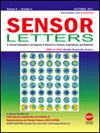Performance Analysis of Inactivated and Acid Activated Marine and Terrestrial Shells Based Adsorbent as an Alternative Bleaching Material for Palm Oil
引用次数: 0
Abstract
The use of environmentally benign materials as adsorbent for bleaching palm oil has been revitalize due to loss of significant amount of oil associated with commercial bleaching earth. This paper examined the performance of inactivated shell samples from snail, mussel, periwinkle and the corresponding acid activated samples as an alternative bleaching material for palm oil. Effectiveness of the bleaching process was examined by determining critical process parameters such as degree of bleaching (%), adsorbent dosage (%), and oil retention capacity of the adsorbent. Maximum bleaching performance of 98.70%–96.60% for inactivated samples and 97.79%–95.52% for 0.5 M hydrochloric acid activated samples were obtained at low adsorbent dosage of 9.09 wt.%. The weight percentage of residual oil (1.38–20.08 wt.%) in the spent adsorbent was extremely low for all the samples. Inactivated samples could be a better alternative for commercial adsorbent.灭活和酸活化海洋和陆地贝壳基吸附剂作为棕榈油漂白替代材料的性能分析
由于与商业漂白土相关的大量油的损失,使用环保材料作为吸附剂漂白棕榈油已得到振兴。研究了螺壳、贻贝、长春花的失活样品和相应的酸活化样品作为棕榈油的替代漂白材料的性能。通过确定漂白度(%)、吸附剂用量(%)和吸附剂的留油能力等关键工艺参数,考察了漂白工艺的有效性。在低吸附剂添加量为9.09 wt.%时,失活样品的最大漂白率为98.70% ~ 96.60%,0.5 M盐酸活化样品的最大漂白率为97.79% ~ 95.52%。在所有样品中,废吸附剂中残余油的重量百分比(1.38-20.08 wt.%)极低。灭活样品可能是商业吸附剂的更好替代品。
本文章由计算机程序翻译,如有差异,请以英文原文为准。
求助全文
约1分钟内获得全文
求助全文
来源期刊

Sensor Letters
工程技术-电化学
自引率
0.00%
发文量
0
审稿时长
6 months
期刊介绍:
The growing interest and activity in the field of sensor technologies requires a forum for rapid dissemination of important results: Sensor Letters is that forum. Sensor Letters offers scientists, engineers and medical experts timely, peer-reviewed research on sensor science and technology of the highest quality. Sensor Letters publish original rapid communications, full papers and timely state-of-the-art reviews encompassing the fundamental and applied research on sensor science and technology in all fields of science, engineering, and medicine. Highest priority will be given to short communications reporting important new scientific and technological findings.
 求助内容:
求助内容: 应助结果提醒方式:
应助结果提醒方式:


